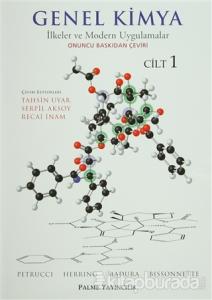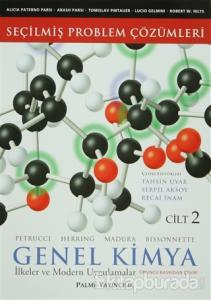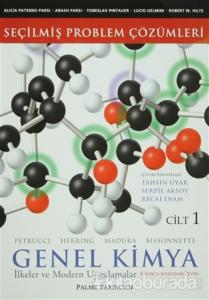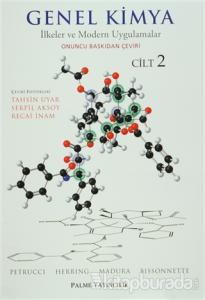General Chemistry (Ciltli)Principles and Modern Applications

Mastering chemıstry
The molecule on the front cover ıs paclıtaxel , C47 H51 NO14, a chemotherapy drug that has been successful in treating breast, lung, and ovarian cancer. It is extracted from the bark of the Pacific Yew tree (Taxus brevifolia). Unfortunately, the bark of a 100-year-old Pacific Yew tree yields aboud 3 kg of bark and only 300 mg of paclitaxel, barely enough for a single dose of the drug (Taxol)
. The synthesis of this molecule engaged the attention of chemists for more than 20 years until fınally, in 1994, chemists from Florida State University and from the University of California (San Diego) announced independently that they were able to synthesize it from simpler and readily available starting materials. A major challenge in the synthesis of paclitaxel is getting the spatial arrangement of atoms around 11 of the carbon atoms just right.
These 11 carbon atoms are identified in the ball-and-stick structure by green or purple circles. If the synthesis is not done carefully, up to 2048 different possible paclitaxel-like structures could be obtained, but only one is known to have the desired anti-tumor activity. Because chemists can now synthesize paclitaxel, it is possible for researchers to explore how it works and design new chemotherapeutic drugs that are safer and more effective.
- Açıklama
Mastering chemıstry
The molecule on the front cover ıs paclıtaxel , C47 H51 NO14, a chemotherapy drug that has been successful in treating breast, lung, and ovarian cancer. It is extracted from the bark of the Pacific Yew tree (Taxus brevifolia). Unfortunately, the bark of a 100-year-old Pacific Yew tree yields aboud 3 kg of bark and only 300 mg of paclitaxel, barely enough for a single dose of the drug (Taxol)
. The synthesis of this molecule engaged the attention of chemists for more than 20 years until fınally, in 1994, chemists from Florida State University and from the University of California (San Diego) announced independently that they were able to synthesize it from simpler and readily available starting materials. A major challenge in the synthesis of paclitaxel is getting the spatial arrangement of atoms around 11 of the carbon atoms just right.
These 11 carbon atoms are identified in the ball-and-stick structure by green or purple circles. If the synthesis is not done carefully, up to 2048 different possible paclitaxel-like structures could be obtained, but only one is known to have the desired anti-tumor activity. Because chemists can now synthesize paclitaxel, it is possible for researchers to explore how it works and design new chemotherapeutic drugs that are safer and more effective.
- Yorumlar
- Yorum yazBu kitaba henüz kimse yorum yapmamıştır.





